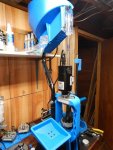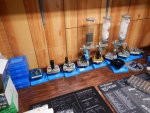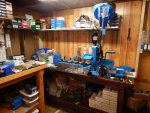As the title says, what did you guys think? I'm set up currently to reload for 308win on a single stage. This winter I got a Dillon 650 and have been reloading 223 and 45acp on it. But I'm thinking I might want to try to reload 308win on it. I would still weigh each powder charge across the scale. I'm buying 200 new Lapua brass and am planning on tweaking my current load to work with the new brass. I fl size everything.
Another question, which dies would you recommend to do this? I currently have rcbs dies. But if I'd be better off with a different seater, I'll damn sure go and buy one.
Tia
Sent from my SM-N920V using Tapatalk
Another question, which dies would you recommend to do this? I currently have rcbs dies. But if I'd be better off with a different seater, I'll damn sure go and buy one.
Tia
Sent from my SM-N920V using Tapatalk













